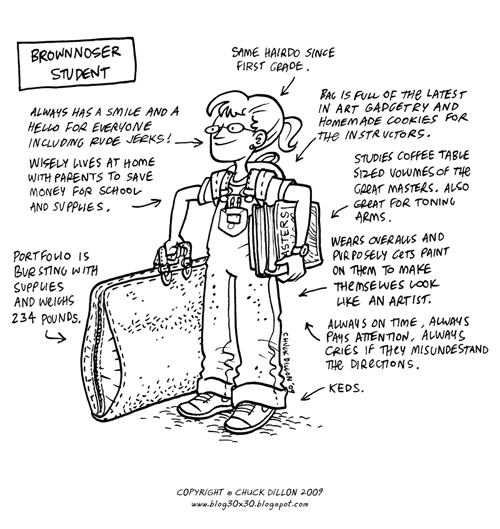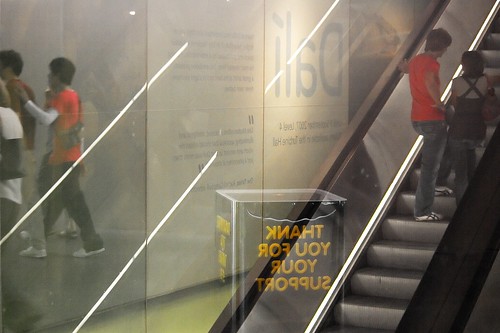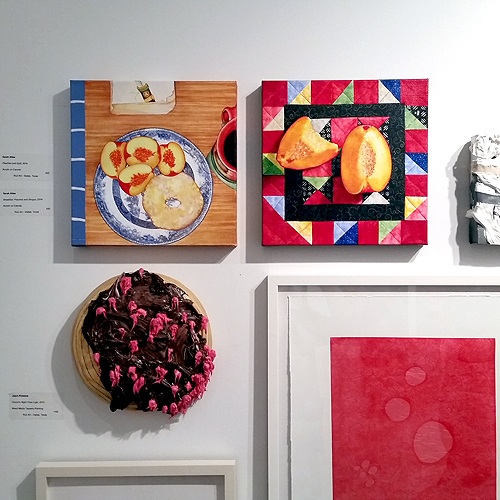 Breakfast: Peaches, Coffee, Shogun and Peaches & Quilt by Sarah Atlee. Seen here as part of Ro2 Art's exhibition at the 2015 Dallas Art Fair.
Breakfast: Peaches, Coffee, Shogun and Peaches & Quilt by Sarah Atlee. Seen here as part of Ro2 Art's exhibition at the 2015 Dallas Art Fair.
Ugh, another art fair?
Art fairs. We've come to expect a certain amount of cynicism connected with these events. There's the jaded art press, the buyers with more money than sense, the gallerists pushing the latest shock-&-schlock, and artists like me - who feel left out of the whole insular art fair circuit.
That's one very dismal view of this business. I'd like to offer a counterpoint, based on my recent experience at the Dallas Art Fair.
The DAF has been running annually for the past seven years. The number of galleries from Texas and the surrounding region has dwindled to make way for exhibitors from around the globe, making it a truly international affair. This was my first visit to the DAF. It was also the first time I had work in an art fair.
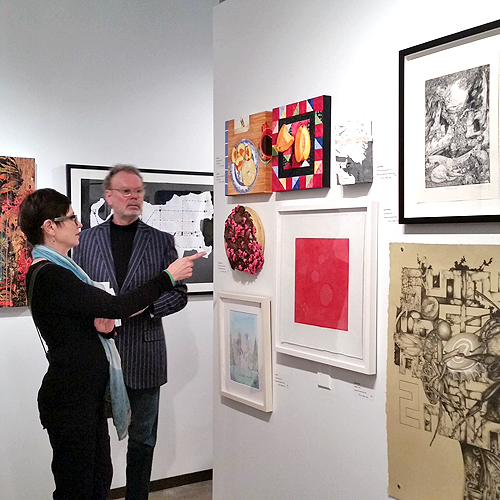 Fair visitors discussing work in Ro2 Art's booth.
Fair visitors discussing work in Ro2 Art's booth.
It was exciting to participate in such a global event. However, the Texas galleries represented at the 2015 DAF stood out firmly from the crowd. What was the one thing that made the difference?
Engagement.
Nobody from a Texas gallery was too cool to talk to me. Nobody from a Texas gallery looked at my shoes and decided that I wasn't about to drop six figures in their booth, so I must not be worth their time. Nobody from a Texas gallery sat staring at their iPad while I looked at the art on their walls.
Instead, the Texas gallerists were greeting visitors, offering information about the artists and their work, all with smiles on their faces. They were engaged. They know that long-term success in the art business isn't about trends, stars, or dollars - it's about relationships. And a good relationship starts with courtesy and a smile.
(This isn't to say that the Texas gallerists were the only engaged participants at the fair. But the atmosphere of presence was so noticeable in the local booths that it's worth noting.)
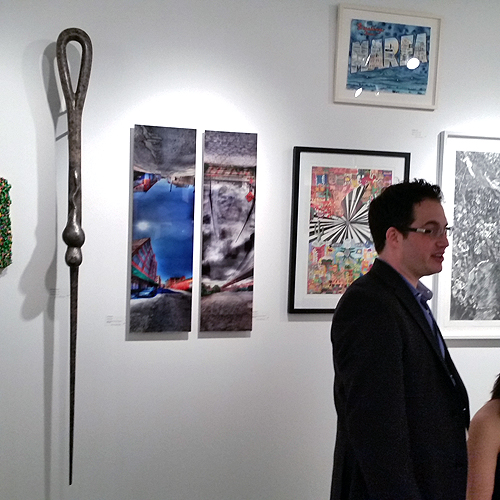
Ro2 Art co-owner Jordan Roth greeting visitors at the 2015 Dallas Art Fair.
Thank you, Texas.
I want to thank the following galleries for representing my new home state so beautifully: Barry Whistler Gallery, Conduit Gallery, Cris Worley Fine Arts, Galleri Urbane Marfa + Dallas, Kirk Hopper Fine Art, Ro2 Art, Sicardi Gallery, Talley Dunn Gallery, Valley House Gallery & Sculpture Garden, William Campbell Contemporary Art, and Zhulong Gallery.
For the first time, I'm very proud to be a Texas artist.
Read more about the 2015 Dallas Art Fair
Glasstire: A Loose Guide: Some Picks and Pics of the Dallas Art Fair, More Dallas Art Fair 2015
Artnews: Gone to Texas: The Art World Flocks to Dallas Art Fair for a Little Lonestar Hospitality
Interview: 10 Picks from the Dallas Art Fair 2015 (3 of the 10 are from Texas galleries.)
Blouin Art Info International: What to See (and Buy) at the Dallas Art Fair
